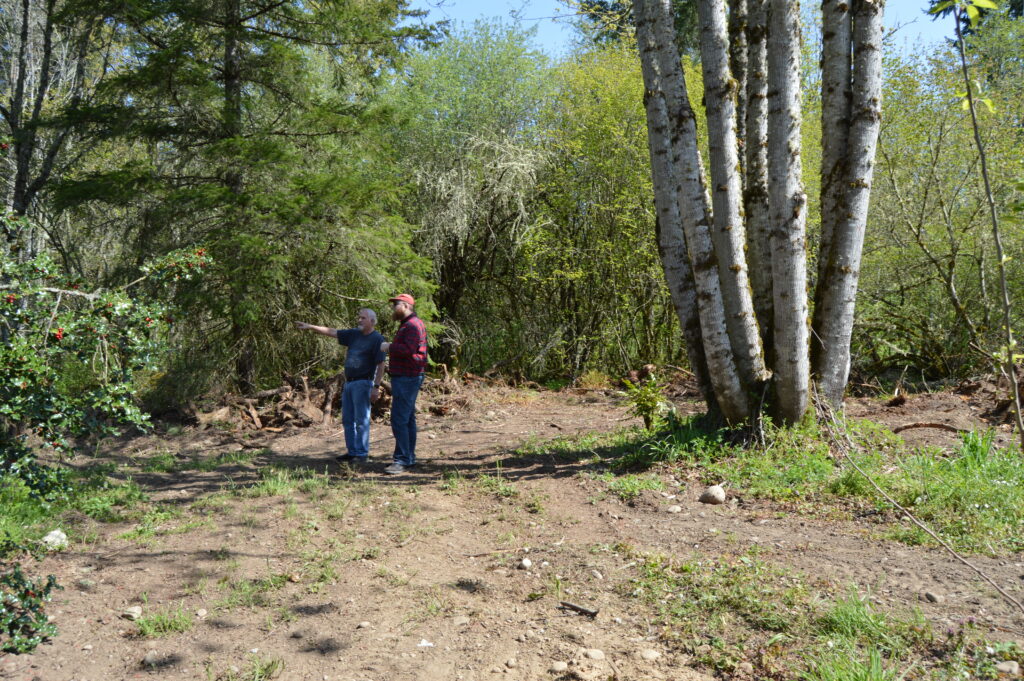Community Health & Wellness
Federal cuts could hamper wildfire efforts, health district warns
Pierce County’s top public health official says slashing of federal funds will hamper the Tacoma-Pierce County Health Department’s ability to mitigate threats of wildfires and their smoke.
Health & Wellness Sponsor
Health and Wellness stories are made possible in part by Virginia Mason Franciscan Health, a proud sponsor of Gig Harbor Now.
The Environmental Protection Agency awarded the health department a three-year, $1 million grant in 2024 to build capacity and resilience against wildfires. EPA terminated that grant this year, the health district announced last month.
Public Health Director Chantell Harmon Reed said the agency will continue to work with the Pierce Conservation District and others to prepare for the threats of wildfires. But she cautioned that “wildfires and wildfire smoke are increasingly important public health threats,” and the “loss in funding puts a big dent in our work to confront them.”
Fewer site visits than hoped
The health district was using grant funds to elevate the county’s wildfire prevention work and get more input for the Department of Emergency Management’s upcoming Community Wildfire Protection Plan, said James Moore, the climate resiliency program manager for the Pierce Conservation District.
A series of talks about wildfire preparedness at county libraries were salvaged. Now officials are looking at ways to recoup the other lost funds, Moore said. Until then, the district will likely scale back outreach work.
About half of Moore’s job involves wildfire education and outreach. That includes visiting homes and neighborhoods through the Wildfire Ready Neighbors program. During these site visits, Moore recommends steps property owners can take to protect their land from a fire.
Moore did about 55 visits in 2024 after he was hired in March. He planned to double that number this summer with the help of an intern and an AmeriCorp volunteer. The cuts will narrow what he can do.
Funding for the internship disappeared along with the EPA grant and the federal government ended the AmeriCorp program in April. That means Moore will also lose time for outreach that helps people learn about their program and provide input on the county’s wildfire protection plan.
“With the grant drop, I certainly have to rebalance things,” he said.
A representative for the health district was out of town and unavailable for an interview before press time.

Gary Hoy (left) pointing out features of a firebreak recently installed on his property in Graham alongside James Moore, climate resilience manager for the Pierce Conservation District.
State and federal cuts
Many agencies across the state are dealing with similar uncertainty ahead of this year’s wildfire season, which Washington’s Department of Natural Resource predicts will have slightly above average activity.
Cuts across the federal government and impacts from the state’s own budget woes could make this a difficult season, state Commissioner of Public Lands Dave Upthegrove said during a call with reporters.
Among many reductions to reign in a four-year, $16 billion budget shortfall, legislators cut wildfire prevention and preservation work in half over the next two years. That should not impact Washington’s fire responses year, Upthegrove said, but “certainly would in the future.”
The U.S Forest Service, which fights fires alongside state and local agencies in National Forrests, also has experienced significant turmoil. U.S. Sen. Patty Murray’s office estimates that the Forest Service laid off about 7,400 employees. Washington’s Department of Natural Resources is concerned about delays in hiring federal firefighters for the season, Upthegrove said.
“Truth is, I think we won’t be able to rely on the federal government, at least in the same way this summer as we always have,” he said.
It is unclear how these cuts are impacting operations at the nearby Olympic National Forest. A large wildfire ignited near the town of Brinnon last summer, on the forest’s eastern border, burning about 400 acres of recently logged lands.
A Forest Service spokesperson redirected questions to the United States Department of Agriculture.
A USDA spokesperson wrote in an email that firefighter staffing levels were similar to previous years and remained operationally ready to support state and local partners. Employees left through a “deferred resignation program,” which the Trump-Administration has used as part of its efforts to slash the federal workforce.
West Sound is not immune
Fewer visits from Moore, the climate resilience manager, can seem inconsequential in an area like Pierce County, where risk of large wildfires is low. But taking precautions can have a large impact if there is a fire, said Thomas Wescott, division chief in charge of fire prevention for Gig Harbor Fire and Medic One.
There is always some luck involved with fires, he said. But a number of proven steps increase the odds of your home surviving. During a large fire event, crews will eventually start triaging homes, he said. If not enough has been done to prepare the home, firefighters may decide to move on.
“We have to make a decision and say ‘no this is too resource-intensive,’ ” he said. “‘There hasn’t been enough work on this house prior to the event.’”
Gig Harbor maintains a low risk for fires, but it is not something the community can ignore, Wescott said. Public officials have increasingly stressed that Western Washington is not invulnerable to wildfires.
John Parkinson, chief of East Pierce Fire and Rescue and president of the county fire chief’s association, said the Summer Grade fire, a 2020 blaze ignited by power lines that destroyed homes and burned nearly 500 acres, was a game changer for the county.
When the blaze turned into a three-alarm fire, Parkinson said there were no additional resources in the county when they called for backup. Their agency fought the fire more or less alone for two to three days. In the years since, he said they have invested heavily in infrastructure to combat large fires.
“What the Summer Grade fire showed us,” he told the Pierce County Council this month, “is that Western Washington is not immune to large-scale wildfires like we see in Eastern Washington.”


